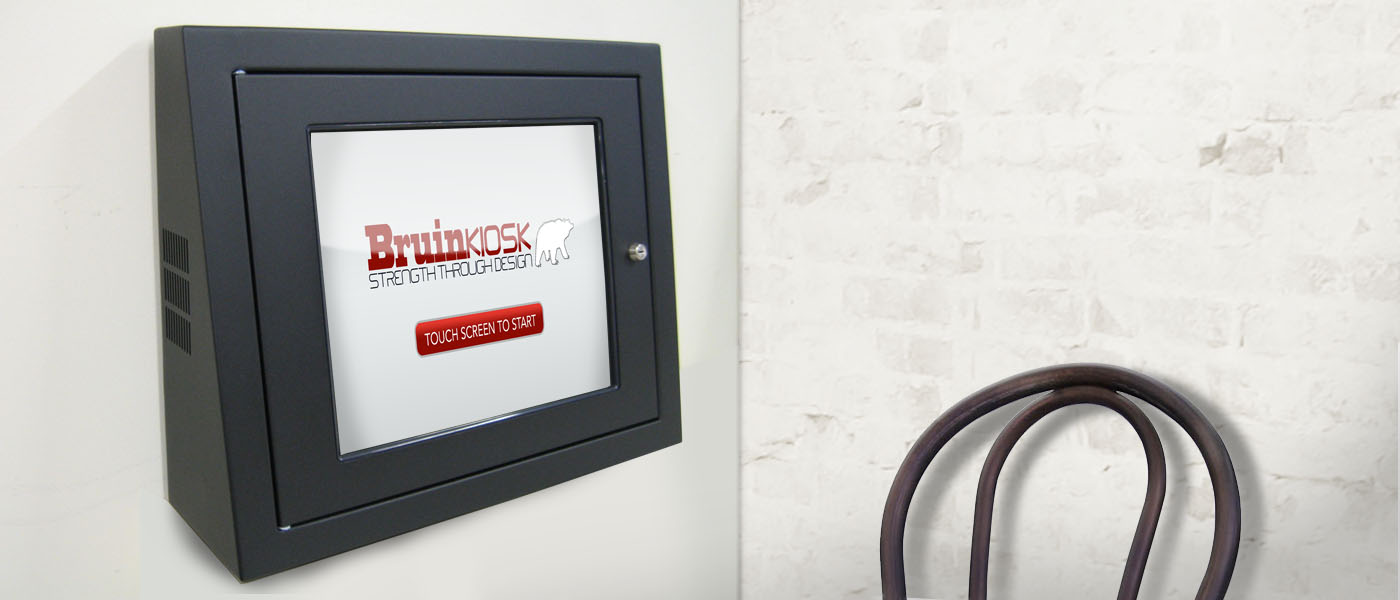Correctional Kiosks:
Bruin Kiosk makes a complete line of prison or jail kiosks. These kiosks are used to manage inmate funds and can also be used for commissaries and email applications. Our correctional kiosks feature a rugged design that is easy to service. We use full computers instead of motherboards like many of our competitors. We also feature full size 19”monitors on our correctional kiosks. Our computers and monitors are high quality and come with three year warranties.
Booking Kiosk:
The most common correctional kiosk is the booking kiosk. The booking kiosk is used to deposit inmate funds. The booking kiosk usually features a bill and coin acceptor, touchscreen monitor, receipt printer and computer. Options can include a magnetic stripe card reader and security camera. We also manufacture kiosks for large institutions which feature bulk coin and/or bulk note acceptors to handle large amounts and help speed the booking process. The kiosk can be fitted with a custom graphic overlay to brand your kiosk and provide use instructions. Dual exterior door locks and inside locking security doors for the coin/bills are standard.
Lobby Kiosk:
Lobby kiosks are used by visitors to deposit funds in inmate accounts. Lobby kiosks have many of the same components as the booking kiosk. Our standard model includes bill acceptor, touchscreen monitor, receipt printer, magnetic stripe reader, and computer. Options include custom graphic and security camera. Coin acceptors are not usually put in lobby kiosks. Dual exterior door locks and inside locking security doors for the coin/bills are standard.
Inmate Kiosk:
Inmate kiosks are used by the inmates to order commissary items and/or send/receive emails. Our inmate kiosk features a sloped front for easy use and viewing. Our standard inmate kiosk comes with a touchscreen and computer. Our inmate kiosk features a removable front door which holds the computer and touchscreen. The exterior cabinet is light and has pre drilled standard mounting holes. The advantage of this design is it allows for easy single person wall mounting. The wide bottom of our sloped style allows for this unit to be table or shelf mounted as an option. We also have a keyboard option for inmate email.
Software:
Our windows based systems can be used with all the major prison software systems. If you don’t have a software system or commissary vendor, we have partners that we would be happy to recommend.

